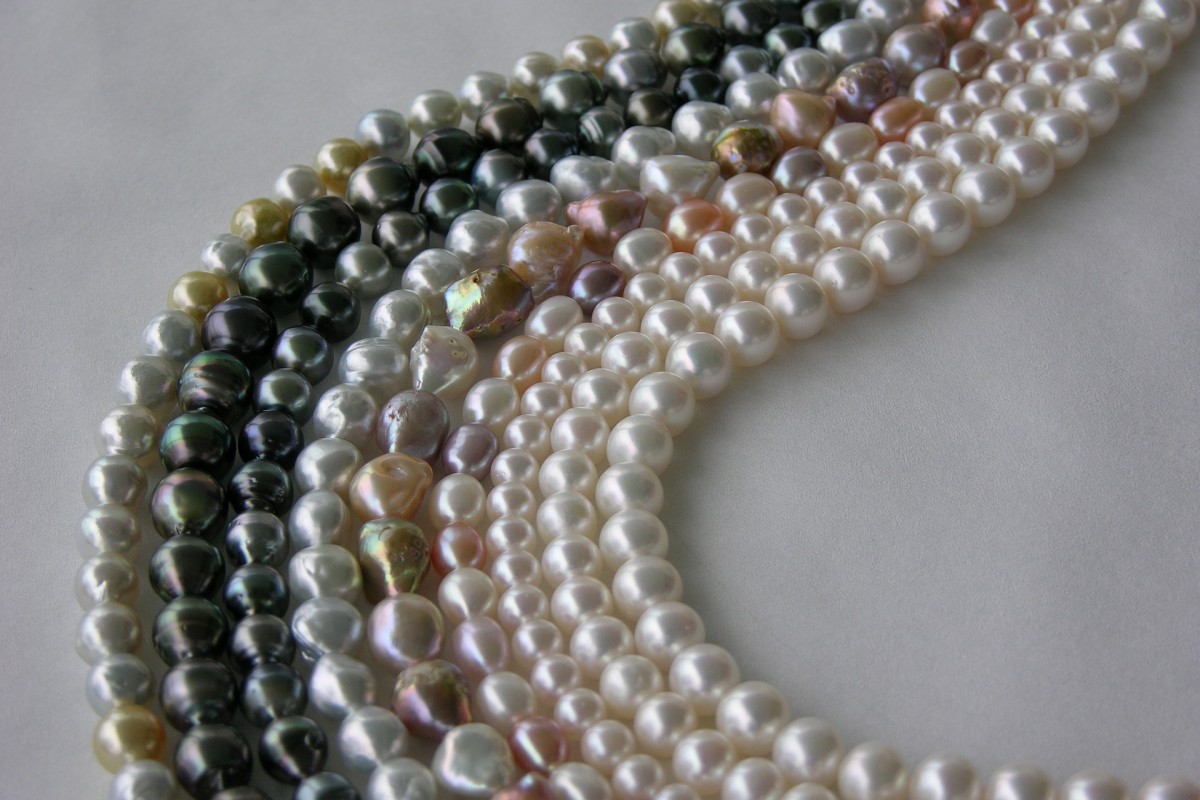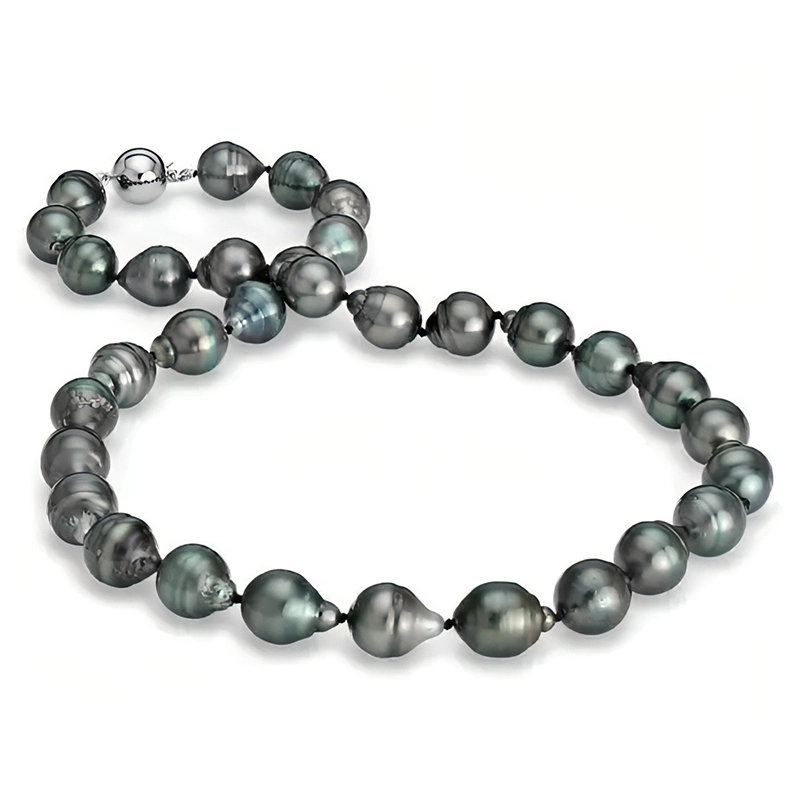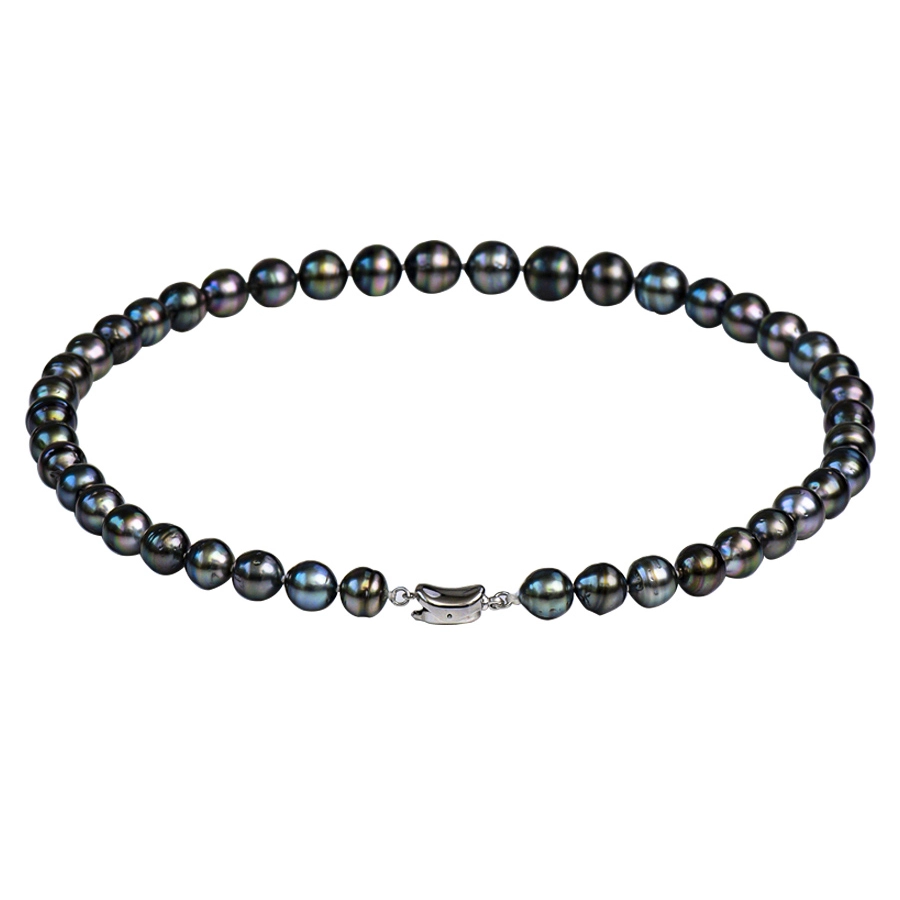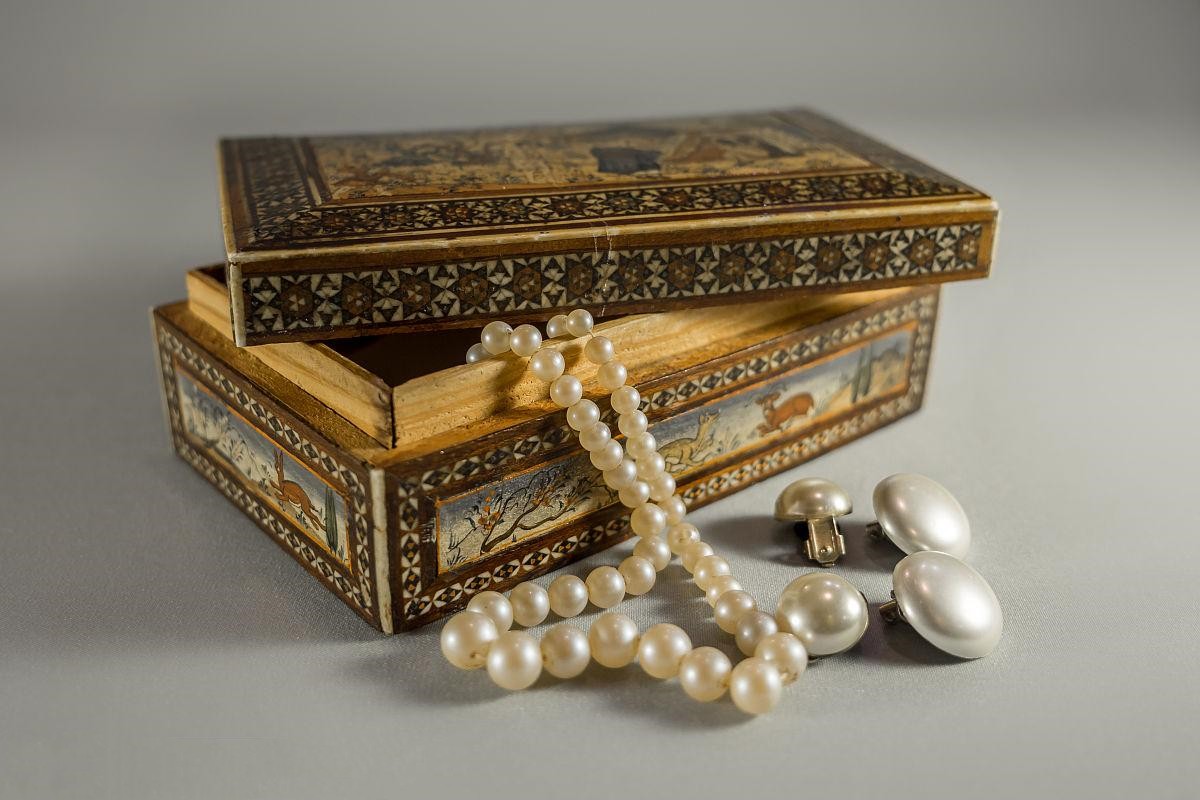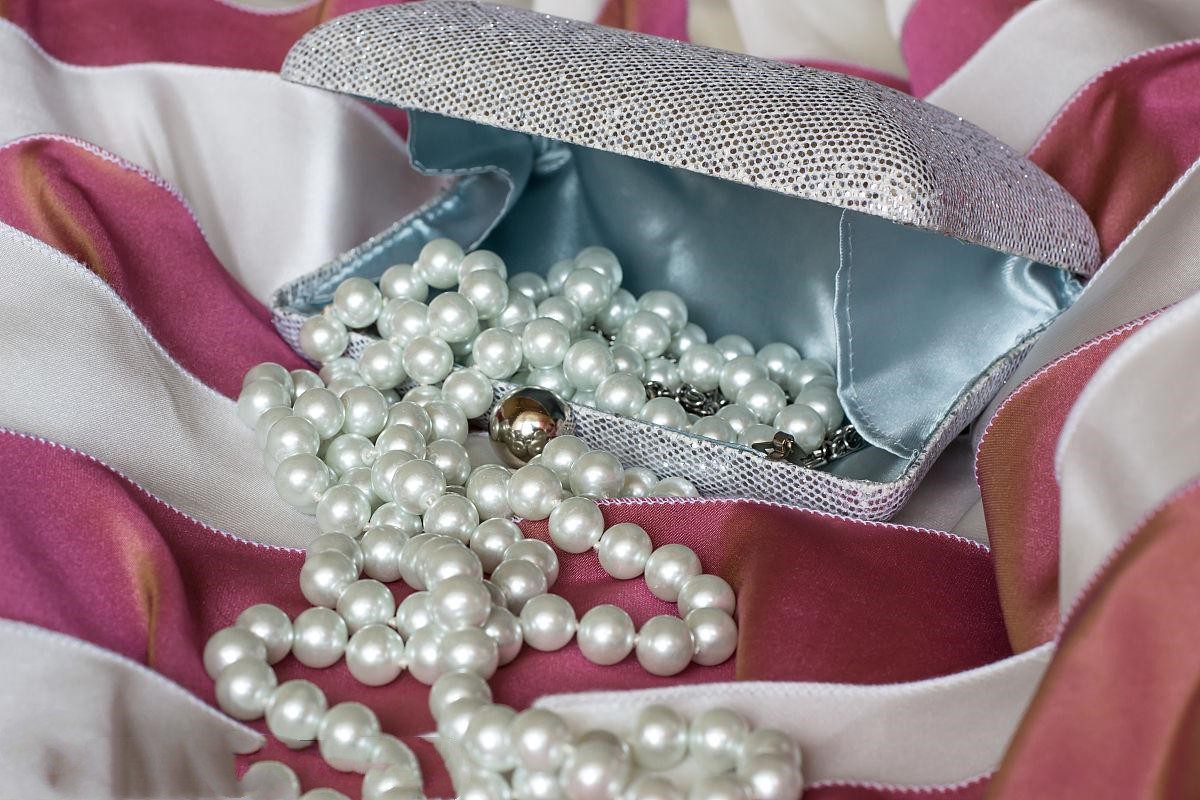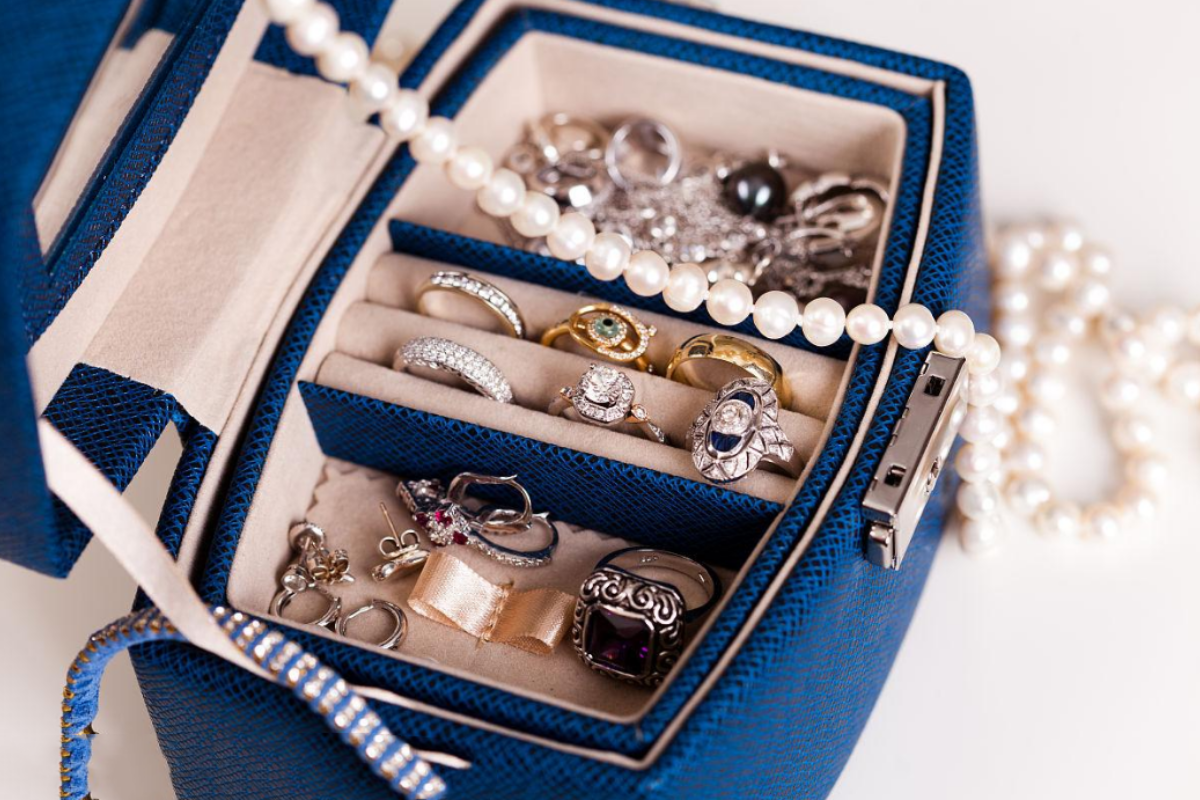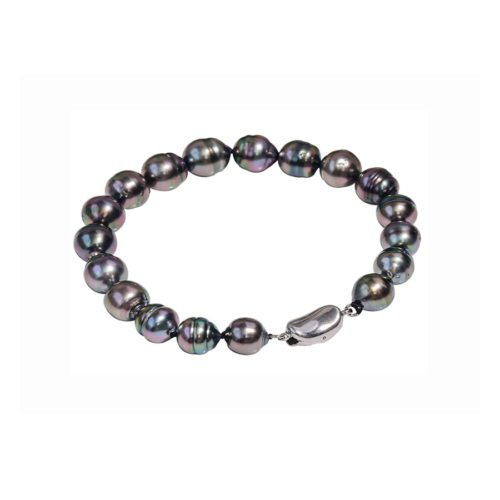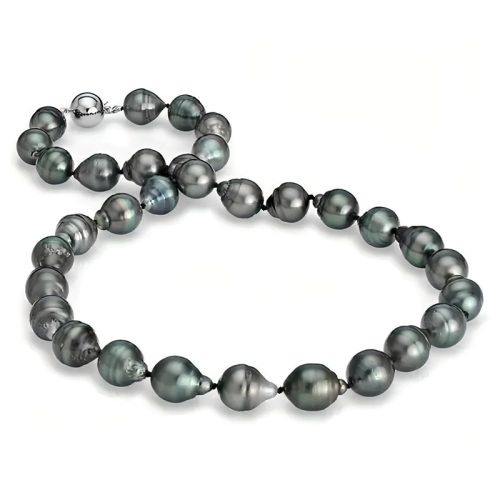Jewelry Basics – Pearls
Oh, the mesmerizing beauty of a pearl! That lustrous, perfectly smooth sphere that is birthed in the heart of an oyster. A pearl is indeed a testament to nature’s magical ability to transform a speck of sand into a thing of immeasurable beauty and value. The formation of a pearl is a fascinating journey. When a foreign object finds its way inside the oyster’s shell, it irritates the mollusk. In response, the oyster secretes a substance called nacre, which coats the foreign body layer by layer, over many years. This constant and diligent work by the oyster results in the formation of what we know and treasure as a pearl.
Pearls are truly unique. No two are exactly alike, and that’s part of their charm! They come in a variety of shapes and sizes, with round pearls being the most sought-after. Pearls also vary in color – from pure white to black, and every shade in between – pink, cream, gold, and silver. Each color adds a different touch to its beauty and uniqueness.
Pearls have been cherished for centuries. Royals, nobles, and celebrities – all have flaunted pearls as a sign of sophistication, elegance, and status. They were once considered so valuable that an entire country’s economy could be built on them. Even today, they continue to be a prized possession for many around the world.
There’s something incredibly romantic about pearls too! They have been a symbol of love and marriage for centuries. It’s no wonder then that pearls are often chosen for wedding jewelry. They add an understated elegance and timeless charm to any bride’s ensemble.
But pearls aren’t just about beauty and value. They have great cultural and symbolic significance too. In some cultures, pearls are considered symbols of wealth and prosperity. In others, they represent purity, integrity, and wisdom gained through experience.
Imagine owning a pearl! It’s not just another piece of jewelry you’re acquiring; you’re becoming a part of an age-old tradition of valuing beauty that comes from patience and persistence. You’re owning something truly extraordinary – a piece of art created by nature itself!
What’s more exciting is that pearls aren’t limited to jewelry! They’re also used in cosmetics due to their rich mineral content and luminous properties that can enhance skin health. They’re even used in some traditional medicines!
In conclusion, pearls are indeed one-of-a-kind marvels! From their unique creative process to their diverse shapes, colors, and uses – they never cease to captivate us with their charm and allure. So here’s to the pearl – a true gift from nature that continues to enthrall us with its timeless beauty.
Pearls seem to belong to women by nature. She is round and pure, with soft light and elegant colors, just like a lady.
01 Recognition of beauty – the basic nature of pearls
Pearls, also known as clam pearls and lianzhu, are an ancient organic gemstone, mainly produced in pearl shellfish and mother-of-pearl shellfish molluscs. Pearls are mineral beads containing calcium carbonate produced by the endocrine action of shellfish, which are composed of a large number of tiny aragonite crystals. There are many types, different shapes and colorful colors.
02 Appreciation of beauty – simple identification method of pearls
1. Microscopic magnification feature: imbricated structure
2. Gloss: typical pearl luster
3. It feels cool to the touch and sandy to the teeth.
The imitations of pearls mainly include plastic beads, glass beads, and shell beads. None of these imitations have imbricate structures, and there is no sandy feeling when biting, which can be used to identify them.
The optimized treatment methods for pearls mainly include bleaching, dyeing, and irradiation treatment. Among them, the dyed pearls can be initially identified by observing whether there are dyes in the pits on the surface and the holes. The identification of bleaching and irradiation treatment needs to be carried out in the laboratory.
03 Knowing Beauty——Pearl Selection
In the process of purchasing pearls, it is necessary to consider the size, color, shape, luster, smoothness, and thickness of the pearl layer and the matching degree of pearls.
1. Size
There is a folk saying of “seven pearls and eight treasures”, that is, pearls larger than 8 mm pearls are considered treasures. Later, the triangular sail clam was introduced. Although the breeding cycle was extended from one year to four or five years, the pearls produced were larger and rounder than before. Now, there are not a few pearls larger than 10 mm, and the output ratio of high-grade pearls larger than 12 mm exceeds 10%.
2. Color
In addition to the common white, the color of pearls also has other colors such as black, cream, bright yellow, bright rose, pink pearls, etc. Among them, white with a little rose red is the best, and blue-black with metallic luster is especially good. Known for their beauty and rarity, black pearls can be misleading to call them “black” pearls, but they are silver or silver-gray with turquoise or bronze iridescence.
3. Shape
The shape of the pearl is preferably a perfect circle. Of course, some special-shaped beads with unique designs can also show their charm.
4. Gloss
A large part of the unique beauty of pearls is due to their luster, which is relatively soft, giving people a subtle, elegant, hazy, and soft aesthetic feeling. Pearls with poor luster appear dull, with low color overtones and iridescence.
5. Finish
Pearls should be selected with smooth and delicate surfaces and those with flaws that are difficult to observe with the naked eye.
6. Pearl layer thickness
Generally speaking, the more nacre layers, the thicker the bead layer, and the higher the order of the aragonite arrangement, the stronger the luster of the pearl and the more rounded the pearl surface.
7. Matching degree
The shape, luster, smoothness, and other factors of the pearls in each piece of jewelry should be uniform, and the color and size should be harmonious and beautiful or gradually change. Eye sockets are centered and straight, clean, and without burrs.
04 Tibetan beauty – maintenance of pearls
Anti-acid erosion: The composition of pearls is calcium carbonate containing organic matter, which is soluble in acid and alkali. It is not suitable for contact with acid and alkali liquids in daily life. Such as: perfume, alcohol, shampoo, etc.
Keep away from the kitchen: pearls have poor chemical stability, so pearl jewelry should be taken off before cooking and washing vegetables in the kitchen to avoid erosion of pearls by washing water, soil, detergent, etc.; of course, cooking fumes are also easy Attached to the surface of the pearl, causing corrosion to the pearl.
Need air: Since the maintenance of pearls requires frequent contact with air, try to avoid long-term storage in sealed bags, and put them in cabinets or jewelry boxes. They should also be taken out and worn for a period of time to prevent pearls from turning yellow.
Avoid sun exposure: Since pearls contain a certain amount of water, pearls should be placed in a cool place, try to avoid direct sunlight, or place them in a place that is too dry to avoid dehydration of pearls.
Anti-scratch by hard objects: The hardness of pearls is low, so it is necessary to prevent scratches by hard objects. Do not store it with other items at the same time when storing it, try to wrap it with a soft cloth and store it.
Regular inspection: change the thread every 3 years: the silk thread is easy to loose after a long time, you can regularly check whether the thread is loose and replace the silk thread once every 1 to 2 years; it is best to restring the pearls every 3 years, of course it also depends on the number of times you wear it depends. Dirt that enters the small holes of the beads creates friction that breaks the nylon thread, and the force near the button is applied to the broken position.
Restore luster: Human sweat is also a serious corrosion to pearls, so try to avoid contact with the skin when wearing them; white pearls worn for a long time will turn yellow and make the luster worse, you can use 1% – 1.5u/o. Bleach with hydrogen peroxide, be careful not to over-bleach, otherwise it will lose its luster.
10.0-12.0mm Tahitian Baroque Pearl Necklace
Original price was: $2,599.00.$2,299.00Current price is: $2,299.00.
12% Off
10.0-11.0mm Tahitian Baroque Pearl Necklace
Original price was: $2,199.00.$1,899.00Current price is: $1,899.00.
14% Off
9.0-11.0mm Tahitian Baroque Pearl Necklace
Original price was: $1,599.00.$1,299.00Current price is: $1,299.00.
19% Off
8.0-10.0mm Tahitian Baroque Pearl Necklace
Original price was: $1,099.00.$899.00Current price is: $899.00.
18% Off
10.0-12.0mm Tahitian Baroque Pearl Necklace
Original price was: $2,599.00.$2,299.00Current price is: $2,299.00.
12% Off
10.0-11.0mm Tahitian Baroque Pearl Necklace
Original price was: $2,199.00.$1,899.00Current price is: $1,899.00.
14% Off
9.0-11.0mm Tahitian Baroque Pearl Necklace
Original price was: $1,599.00.$1,299.00Current price is: $1,299.00.
19% Off
8.0-10.0mm Tahitian Baroque Pearl Necklace
Original price was: $1,099.00.$899.00Current price is: $899.00.
18% Off

